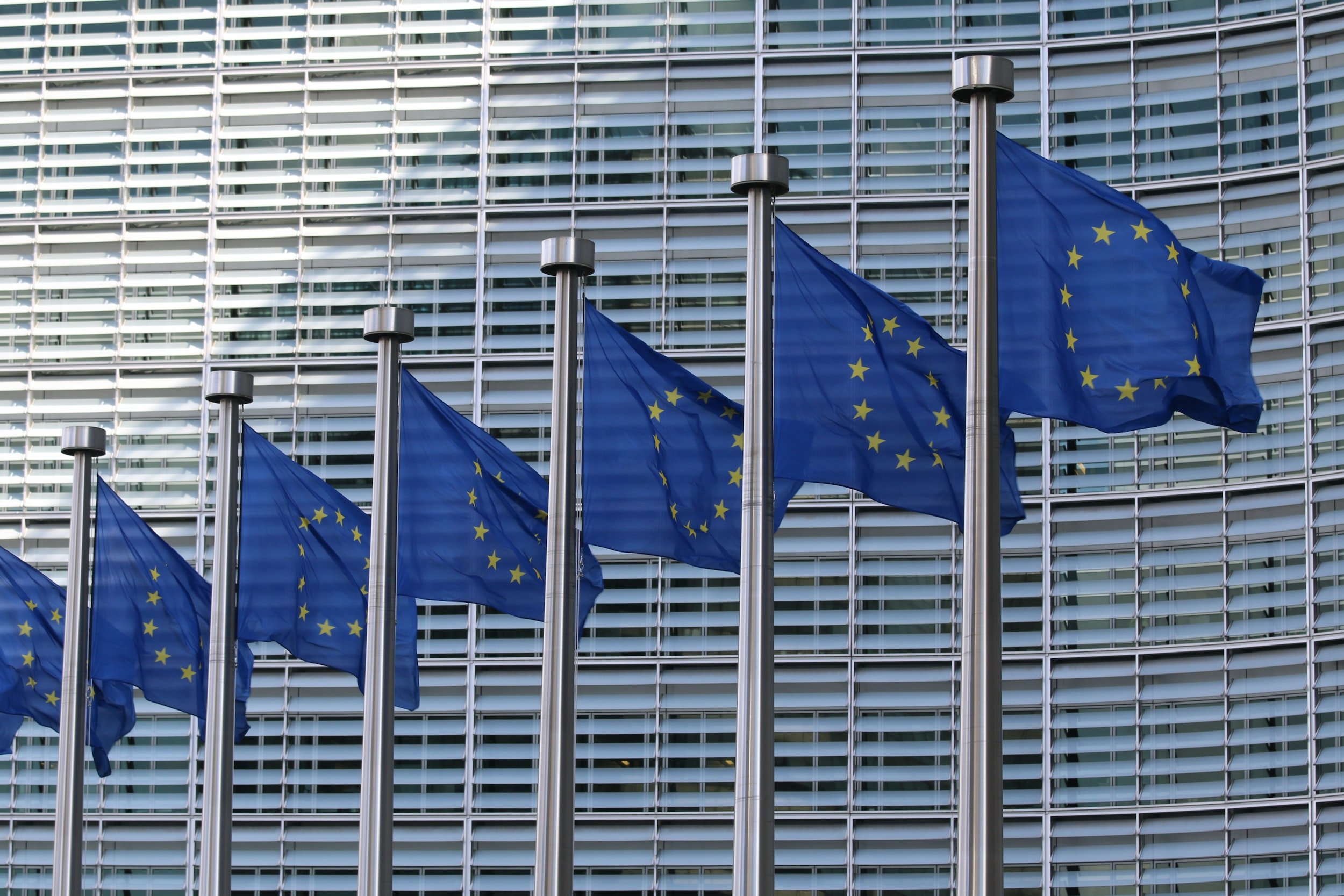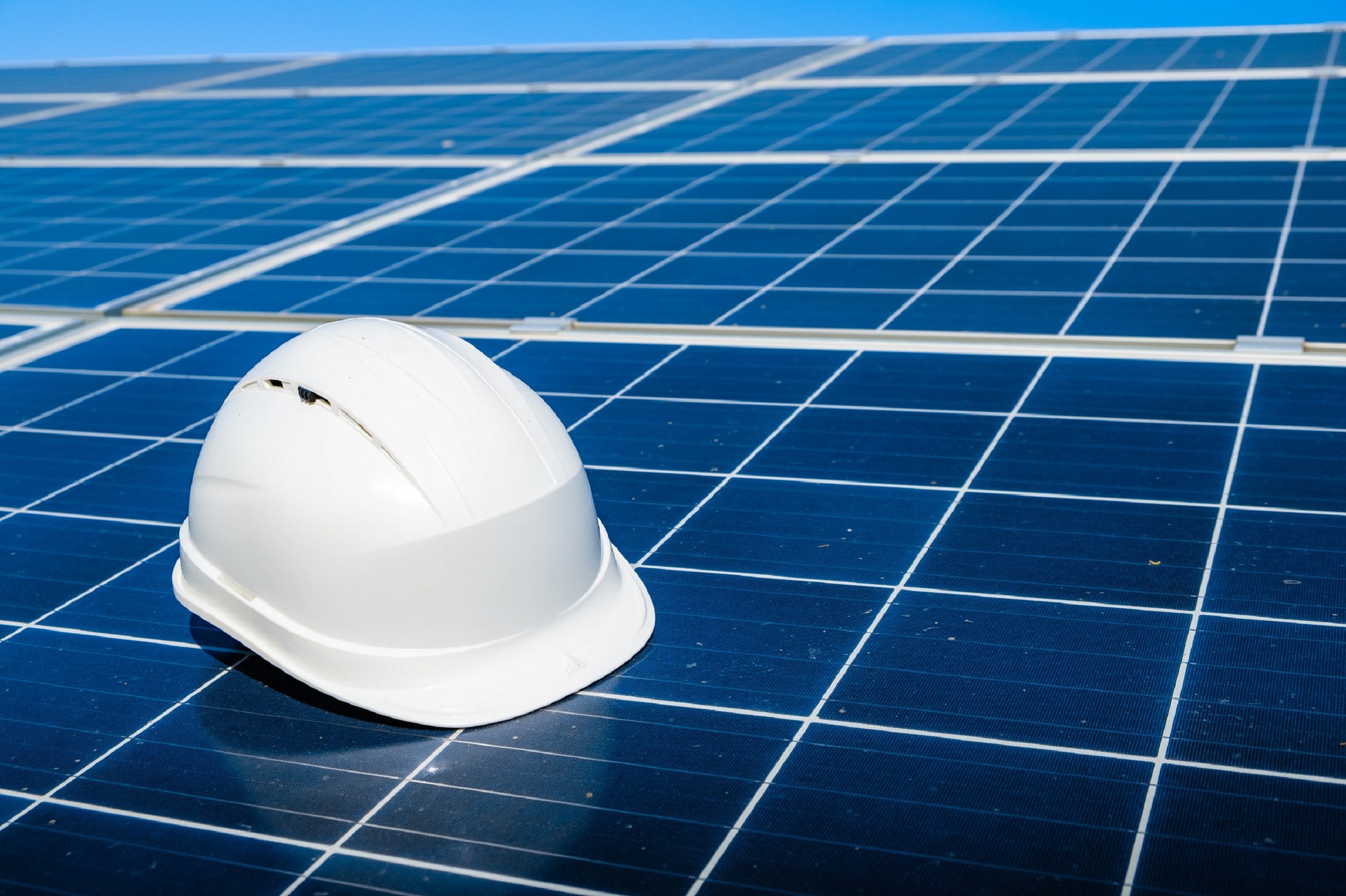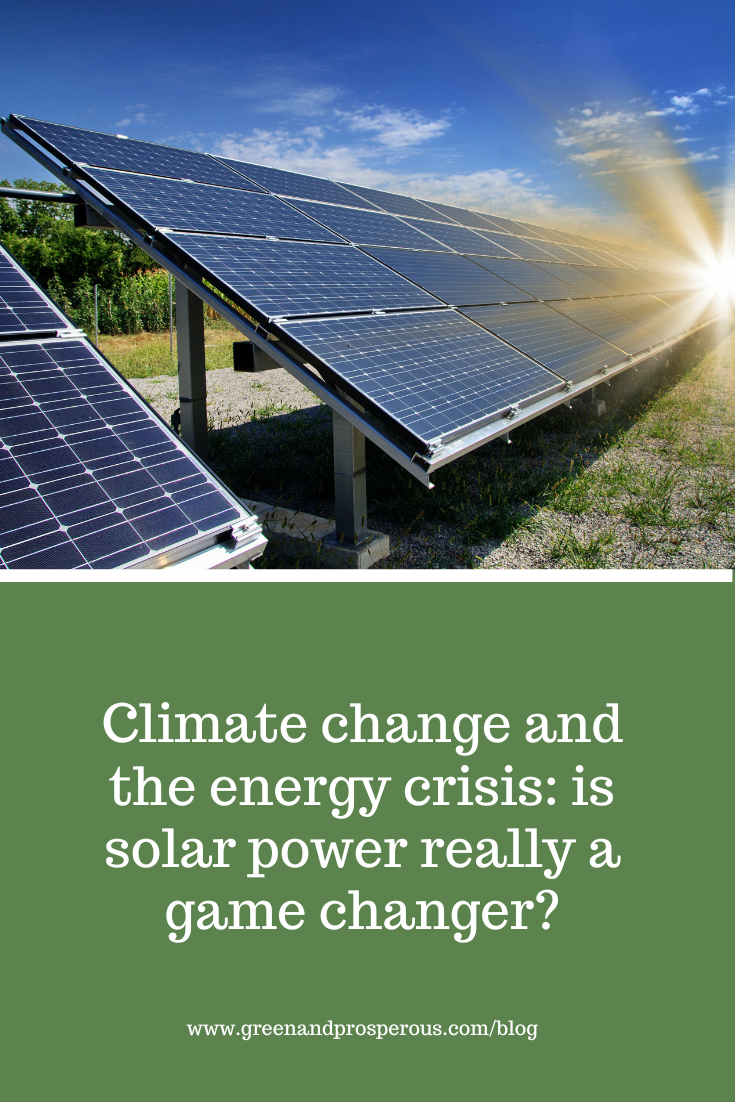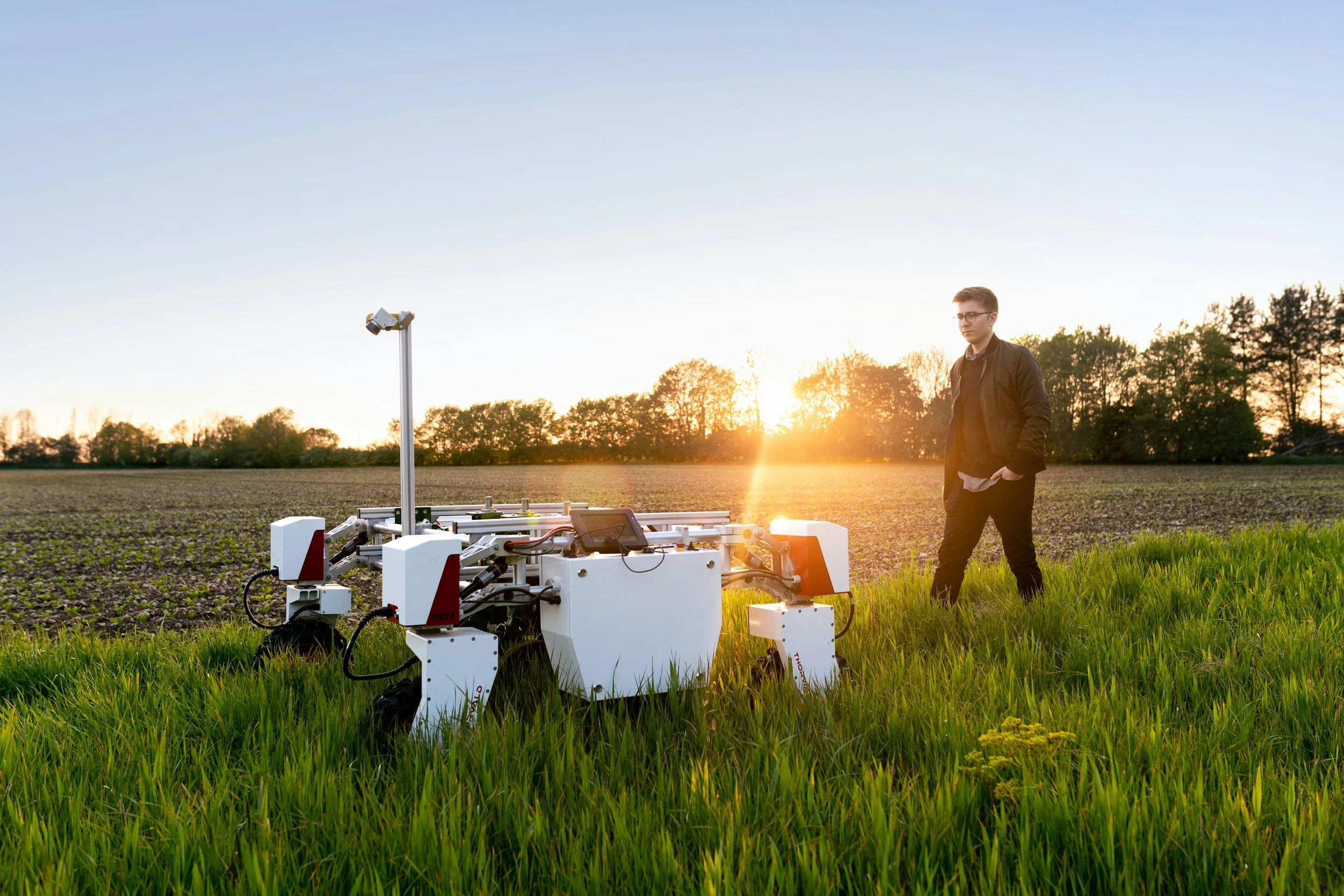Climate change and the energy crisis: is solar power really a game changer?
/Solar power is far from being a fad, considering the urgency of the need to mitigate the long-term effects of the climate crisis. We know now that human activity from the mid-twentieth century has been responsible for the rapid pace of the climate change that threatens wildlife and human survival in the long term. Most of this activity can be traced to burning fossil fuels like coal, oil, and gas. Climate change is causing the ocean to warm and become more acidic, ice sheets to retreat, and glaciers to melt in the Arctic regions. By some estimates, rising sea levels will leave some cities completely submerged in the next few decades. The most dire predictions claim that the trend of global warming could be irreversible in just seven years: by 2030.
And yet, there has been a flurry of activity on the part of industry, the scientific community, and government to develop technologies to deal with the crisis right now. While technology alone can't solve the climate crisis, and ultimately people will have to change their consumption habits to use and waste less, some technologies are leading to hope that it's not too late to reverse course.
One such technology is solar power.
When it was first discovered in the 19th century that sunlight could generate electricity, there wasn't much progress in identifying major uses for solar cells. During the next couple of centuries, research and development on solar technology and its applications would continue with more concrete results.
Current feasibility studies show that solar panels are sufficiently effective and powerful to be able to illuminate an entire nation. Entrepreneurs in the solar energy sector are set to benefit from the global rise in demand, and many have shared ways to get quality leads quickly. Solar energy can be a great substitute for fossil fuels; it has the potential to make energy more affordable and available to everyone, and many companies are now offering such services.
But can solar really help solve the energy crisis and mitigate climate change?
Challenges of Implementing Solar
The answer depends on who you ask. Although solar power is increasingly seen as a viable alternative to fossil fuels for meeting the world's energy needs, it does come with some challenges for the individual homeowner as well as the large, industrial-scale operations
Costs
When it comes to costs, the savings that solar power users gain don't just pertain to lower electricity bills every month. At the outset, you can save on installation costs since you are only relying on the service provider in your area to help you cut on costs related to transporting or distributing electricity over long distances.
Solar power has been around for decades, but its use has been limited due to its relatively high cost compared to other forms of energy. However, recent advances in technology have made solar power more affordable a more common sight on commercial as well as residential rooftops. Although photovoltaic (PV) panels are the most common solar panels in use today, some homeowners and businesses have adopted the newer solar tile technology, photovoltaic shingles, in which the solar technology is built right into the tile. It's more expensive, but also more aesthetically pleasing, since it looks just like a conventional roof.
In either case, the upfront cost can be minimal or hefty. Leasing solar panels is the cheaper option that many homeowners have gone for: leasing options in the US can be as cheap as $0 down and monthly leasing costs can range from $50-$200 per month. However, with a lease, you will be able to take advantage of solar energy rebates and tax breaks, you won't own the solar panels, and the lease may make it harder to sell your home when the time comes. Owning panels incurs a higher upfront cost, but you will not only be able to take advantage of financial incentives to purchase the panels, owning panels will increase the value of your home when it is time to sell.
For more information about how solar panels affect your home value, see the infographic below.
Power companies
For individual homeowners and some smaller businesses, another challenge is finding ways to manage the power supply from their current energy supplier. Sometimes, electric companies prevent or take their time to switch customers over to solar energy, so you could have to wait weeks or months after leasing or buying the system before using it. Since most solar power systems have to still rely on the traditional grid when encountering a power outage or not receiving enough heat from the sun for their PV panels, the power company still has some control in this situation.
Some electricity providers have started to implement extra charges for those who use solar energy. Demand-and-grid charges, minimum monthly fees, and charging customers more for energy they use during peak times are just some of the sneaky ways in which some power companies have tried to undermine the savings that users can get from switching to solar. To combat these issues, solar users have resorted to employing demand-management systems and installing batteries to store excess energy. However, these are not inexpensive options.
Infrastructure
In the US and Western Europe, building infrastructure and the grid that is necessary in order to meet the demand for solar energy has been delayed from an industrial standpoint, however Ember, an energy think tank reported that in the first half of 2022 solar power and other renewable resources were able to supply sufficient electricity. Supply chain hurdles remain an issue both nationwide and abroad, partly due to the aftermath of the two-year pandemic, and partially caused by international trade difficulties such as the present issues within maintaining competitive markets and preventing preferential trading techniques (which usually affect poorer nations most).
Waste
Finally, there is the challenge of wastage, with older solar panels starting to make their way into landfills. Although solar waste has not yet become a major challenge, it stands to become one in time if the solar industry does not focus more efforts on recycling panels at the end of their lifespan.
Benefits outweigh challenges
Despite these challenges, there are more benefits than downsides to solar energy. Proponents of solar point to its many advantages, including its cleanliness, abundance, and cost-effectiveness. Solar energy is renewable and does not produce any emissions or pollutants that can contribute to global warming or climate change. Solar energy is also abundant, with enough solar energy hitting the Earth in one hour to power the entire world for a year. Finally, solar energy can be cost-effective over time, as it requires little maintenance and has no fuel costs associated with it.
Potential for Solar to Address Climate Change
By most accounts, solar power has the potential to be a game changer in addressing climate change. Because it is one of the most abundant sources of energy available on Earth, a renewable source of energy that does not emit any greenhouse gases, it is an attractive alternative to conventional sources of energy such as coal and natural gas, which have clearly contributed to the worsening climate crisis. But what impact can it have in the near term?
Impact of Solar Power on the Energy Crisis
Renewed urgency for solar development
Solar energy could be a real revolutionary force in tackling the energy crisis and climate change. Governments in Europe, the US, Canada, and other regions have made efforts to overcome the regulatory and administrative hindrances that are disrupting the uptake of solar energy by individuals, businesses, and industry. The war in Ukraine has also sped up government reforms, encouraging the European Union and the United States to increase access to and use of solar energy.
The development of solar energy in Europe
According to SolarPower Europe, the advocacy association for the solar PV sector in the European Union, European leaders can take five key actions that would make a difference right away:
Fund, train, and map solar workforce shortages to speed up its development, and utilize a 'neighborhood approach' to maximize existing workforce efficiency for PV rooftop installations.
Require member states to chart and permit areas for faster development of renewable energy by June 2023.
To assist in financing rooftop solar and alleviate the energy crisis brought on by the war in Ukraine, the State Aid Temporary Crisis Framework, introduced in March 2022, should be broadened and tendering regulations simplified.
Solar installations should be excluded from obtaining construction permits, similar to countries such as Sweden, Italy, Germany, and the Netherlands.
Offer special contracts for flexible or hybrid renewable energy projects
The development of solar energy in the MENA
In constitutional monarchies of the Middle East and North Africa (MENA) region, such as Morocco and Jordan, the development of solar power has faced fewer obstacles. This is partly due to a combination of massive financial commitments on the part of their governments to developing clean energy sources, and the top-down nature of politics in those countries (which also enables a more favorable regulatory and development environment for industry).
Other countries of the Middle East, including Egypt and the UAE, have also become major consumers and producers of solar energy. According to Global Energy Monitor, Oman, Morocco, Algeria, Kuwait and Iraq are among the top 5 the Arab world countries that have made substantial investments in wind and solar for projects that have been announced or are in development. These projects aim to be fully implemented by 2030.
The development of solar energy in Asia
Asia is expected to become a global hub of solar energy, with several countries in the region planning substantial increases in the production of solar energy by 2030. China plans to increase capacity from its current rate of 340 gigawatts (GW) to 1200 GW, India aims to get from its current 59.34 installed capacity to 300 GW, Indonesia plans to add 4.8 GW to its current 62 megawatts (MW) of installed capacity, and the Philippines will add 18GW to its current 896 MW.
Japan and South Korea remain reliant on fossil fuels for a majority of their energy needs; however, both countries hit solar power records this past May, both have expressed commitment to rapidly expanding their solar capacity, and both countries remain among the top ten global economies in terms of installed capacity for solar energy.
The development of solar energy in Africa
China currently has the world's highest installed capacity of solar PV power, yet Africa holds 60% of the globe's best solar energy resources but is among the lowest in its capacity (1%) to generate solar energy. Despite this challenge, Southern Africa's own South Africa and other sub-Saharan African nations like Zimbabwe, Zambia, Democratic Republic of Congo, Angola, Namibia, Ethiopia, and Botswana have made noticeable strides in promoting local markets and gaining the attention of international investors in recent years.
With Africa being one of the world's most at-risk regions for climate-related disasters, the World Economic Forum's estimate that it will take $190 billion of investment in Africa for it to achieve its climate goals by 2030 should be seen as an opportunity rather than a handout. This was a point repeatedly made at the 2022 United Nations Climate Change Conference (COP 27). With Africa being one of the world's most at-risk regions for climate-related disasters, investing in solar power in this region could make a real dent in global efforts to address climate change and eliminate the much higher cost of dealing with climate emergency-related fallouts that will result from inaction.
A Real game-changer...and an opportunity
like this? Please pin!
Solar power is indeed shaping up to be a game changer when it comes to addressing climate change and the energy crisis. It is a clean, abundant, and cost-effective source of energy that has the potential to reduce emissions and help mitigate the effects of global warming. Solar power can reduce our dependence on fossil fuels, which are the main source of greenhouse gas emissions. Additionally, solar power can provide a reliable source of energy that is not affected by weather or other external factors, and can also reduce electricity costs as it is often cheaper than traditional sources of energy.
Solar power is a major contributor to solving the energy crisis and climate change. As greenhouse gases have reached the point of being potentially irreversible, solar energy is anticipated to be vital to the world's future energy supply, which could help resolve or significantly lessen the impact of the climate crisis.
You may also be interested in…
















































Rechargeable batteries are reshaping how we power our everyday lives, offering convenience, efficiency, and sustainability in one package. When I first switched from disposable to rechargeable batteries, it felt like a small step. Over time, however, I realized their significant impact — not just on my wallet but also on the environment.